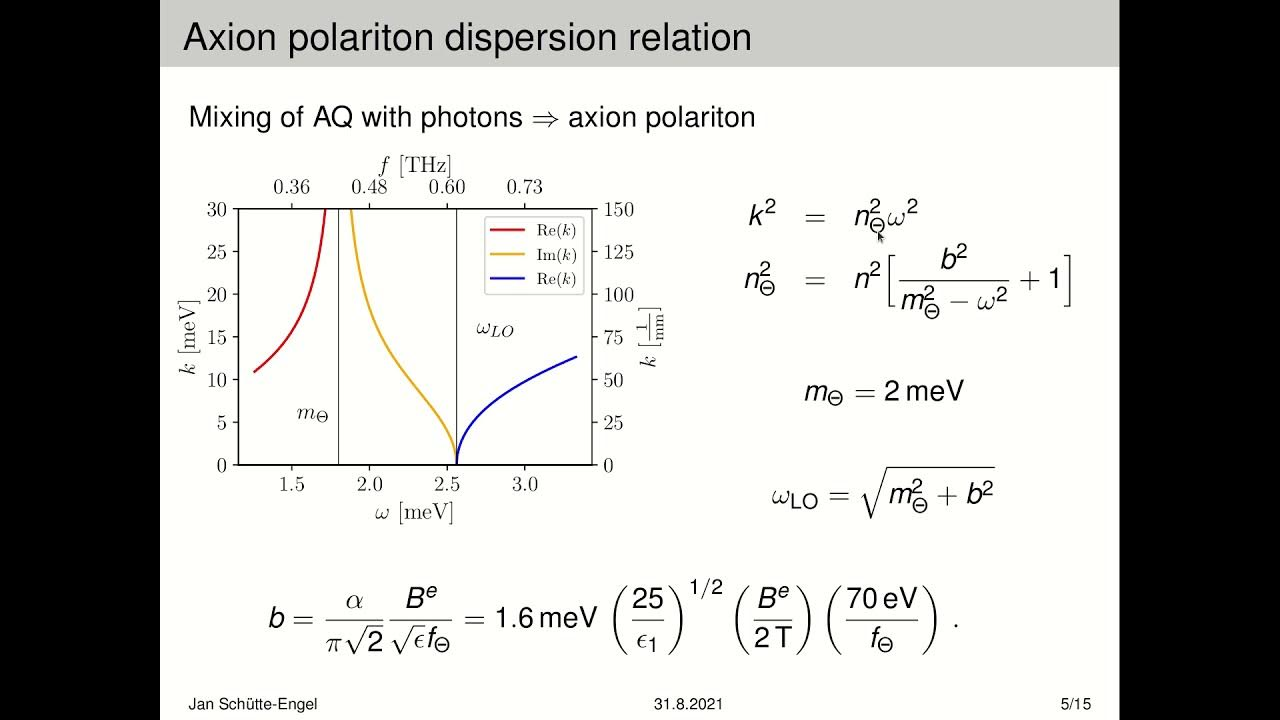The elusive axion quasiparticles are at the forefront of revolutionary research in dark matter, providing a potential key to unlocking the mysteries of the universe. These theoretical particles, proposed to explain dark matter’s complex nature, have remained unseen—until now. Recent groundbreaking findings from a collaborative team at Harvard and King’s College London have advanced our understanding of axion quasiparticles, setting the stage for novel detection techniques in particle physics. By utilizing innovative materials like manganese bismuth telluride, researchers have crafted conditions under which axion quasiparticles can be observed, resembling dark matter interactions. This exciting work not only illuminates the path to confirming the existence of dark matter but also opens up possibilities for new quantum technologies, echoing the profound implications once awaited from the Higgs boson.
The quest to discover fundamental particles, such as axion quasiparticles, is critical in addressing long-standing questions in physics. Often referred to as hypothetical building blocks of dark matter, these quasiparticles present a vibrant area of research. Through advanced methodologies and innovative materials, scientists are inching closer to the realization of axion detection, dangling promises of breakthroughs in cosmic understanding. This pioneering research not only aims to unveil the life beyond the visible cosmos but also captivates future explorations in quantum materials. Ultimately, this journey can reshape our comprehension of the universe, much like the revelations brought forth by the Higgs boson had done.
The Impact of Axion Quasiparticles on Dark Matter Research
Axion quasiparticles have emerged as a revolutionary concept in the quest to understand dark matter, a perplexing substance that is thought to make up around 85% of the universe’s mass. These quasiparticles act as a proxy for actual axion particles, allowing researchers to create measurable interactions in various materials. By utilizing innovative materials such as manganese bismuth telluride, scientists can harness axion quasiparticles to indirectly detect signals that indicate the presence of dark matter. This groundbreaking advancement not only aids in the search for dark matter but also enhances our understanding of the fundamental building blocks of the universe.
The research team’s method involves manipulating these axion quasiparticles to reveal their properties and interactions, akin to tuning into a cosmic frequency that could unveil dark matter signatures. This technology is being compared to a ‘cosmic car radio,’ which may eventually lead to one of the most accurate detectors of dark matter. By examining the coherent dynamic behavior of axion quasiparticles, scientists are making significant strides toward confirming the existence of these elusive particles that could shape our understanding of particle physics and cosmology.
Quantum Materials: The Key to Unlocking New Frontiers
Quantum materials present an exciting avenue for scientific exploration, particularly in the realm of axion quasiparticles and dark matter detection. The novel use of manganese bismuth telluride highlights the potential these materials have for facilitating interactions that were previously difficult to observe. The precision engineering involved in layering this material to create a 2D crystal structure has laid the groundwork for significant advancements in quantum technologies. By fine-tuning the properties of quantum materials, researchers can enhance the generation and observation of axion quasiparticles, which could reveal fundamental truths about the universe.
This interdisciplinary approach combining condensed-matter physics with high-energy physics underscores the transformative role of quantum materials in scientific research. As scientists continue to innovate and refine techniques for working with these complex materials, the insights gained could lead to practical applications in various fields, including telecommunications and quantum computing. The intersection of quantum materials and particle physics could give birth to technologies that not only detect dark matter but also revolutionize our understanding of fundamental physical principles.
The Role of Innovative Techniques in Advancing Particle Physics Research
To confirm the existence of dark matter axions, researchers are employing cutting-edge methodologies, including ultrafast laser optics and sophisticated measurement tools. These techniques allow scientists to capture the rapid excitations of axion quasiparticles, turning theoretical predictions into observable phenomena. The precision of these advanced methods is crucial for detecting the subtle signals from axion particles that have eluded scientists for decades. By refining experimental conditions, researchers can enhance the quality of their findings, thus pushing the boundaries of particle physics.
Innovation in measurement technologies has proven essential in the study of axion quasiparticles. The ability to visualize the dynamics and interactions of these quasiparticles in real-time enables researchers to gather invaluable data that can inform and refine theoretical models of dark matter. The continuous improvement of these technological approaches signifies a promising era in particle physics, where detailed investigation into the nature of dark matter becomes increasingly feasible.
Collaborative Efforts in Axion Research: A Multidisciplinary Approach
Collaborative research endeavors are playing a vital role in the advancement of axion studies. Teams that bridge various fields, such as particle physics, material science, and chemistry, bring a wealth of knowledge and technical expertise necessary for tackling the intricate questions surrounding axion quasiparticles and dark matter. The recent findings from a collaboration between Harvard University and King’s College London exemplify the power of interdisciplinary teamwork in addressing longstanding mysteries of the cosmos. As researchers combine their expertise, they unlock new potential for innovative solutions to fundamental questions in physics.
Additionally, international collaboration has become crucial in pushing the boundaries of what can be achieved in this field. With researchers from diverse institutions like UC Berkeley and Northeastern University contributing to the quest for axion detection, the pooling of resources, knowledge, and technological capabilities accelerates the pace of discovery. This collaborative spirit is essential in addressing the complex challenges of the particle physics landscape, particularly in the study of dark matter and its constituents, and it fosters an environment of innovation and exploration.
The Future of Dark Matter Detection: Axion Quasiparticles Leading the Way
The future of dark matter detection appears promising with the advancements in axion quasiparticle research. By refining the techniques for observing and measuring interactions involving these quasiparticles, scientists aspire to develop detectors that can precisely capture dark matter signals. This innovative approach not only stands to confirm the existence of axions but also revolutionizes our understanding of dark matter itself, offering insights into its role in the universe’s formation and evolution. The quest to tune into axion frequencies could lead to discoveries that fundamentally reshape foundational theories in particle physics.
Moreover, the evolving understanding of axion quasiparticles provides a pathway to explore new realms of technology. The potential applications of these advancements could extend beyond astrophysics, paving the way for breakthroughs in other scientific fields. Researchers are optimistic that their work could lead to innovations in quantum technology, contributing to the development of more effective quantum computing systems and reliable communication channels reliant on light-matter interactions. As research in this area continues to progress, the scientific community eagerly anticipates the future impact of these findings on our comprehension of the universe.
Frequently Asked Questions
What are axion quasiparticles and why are they important for dark matter research?
Axion quasiparticles are simulated forms of axion particles that are utilized in experiments to detect actual dark matter axions. They play a crucial role in particle physics as they could validate theories about dark matter, which makes up about 85% of the universe’s mass. A key breakthrough in this area allowed researchers to use axion quasiparticles as detectors, enhancing our understanding of particle interactions and cosmic phenomena.
How do researchers use axion quasiparticles to detect dark matter?
Researchers employ axion quasiparticles in sophisticated experimental setups, where they can detect the presence of dark matter axions. When a dark matter axion interacts with the material, it excites the axion quasiparticles, creating measurable signals. This method serves as a potential cosmic car radio, allowing scientists to tune into specific frequencies emitted by axion particles and potentially discover dark matter.
What is the relationship between axion quasiparticles and quantum materials?
Axion quasiparticles are intrinsically linked to quantum materials, serving as a bridge between abstract theoretical concepts and tangible experimental observations. The study of these quasiparticles leverages unique properties of materials like manganese bismuth telluride, enabling researchers to explore new interactions and phenomena that could lead to advancements in quantum technologies and insights into the fundamental structure of the universe.
How do axion quasiparticles contribute to advancements in particle physics and cosmology?
Axion quasiparticles contribute significantly to advancements in particle physics and cosmology by providing experimental evidence for the existence of axions, a proposed component of dark matter. By confirming these quasiparticles’ behaviors, researchers can refine their understanding of the fundamental forces and particles in the universe, paving the way for new technologies and deeper insights into cosmic evolution.
What is the significance of the recent experiments involving axion quasiparticles?
Recent experiments involving axion quasiparticles are significant because they represent a major leap forward in the quest to confirm the existence of axions as constituents of dark matter. These studies not only enhance our understanding of particle dynamics but also pave the way for potential technological advancements in quantum materials, which could revolutionize how we detect and study dark matter in the universe.
Will future experiments with axion quasiparticles lead to a discovery of dark matter?
Future experiments with axion quasiparticles hold the potential to lead to the discovery of dark matter. Researchers aim to refine their techniques and probe deeper into the properties of these quasiparticles to capture the elusive dark matter signals, which, if successful, could revolutionize our understanding of the cosmos and the fundamental nature of matter.
| Key Points | Details |
|---|---|
| Background on Axions | Axions are hypothetical particles that may explain dark matter, which constitutes a major portion of the universe’s mass. |
| Recent Experiment | A research team has developed a method to use quasiparticles as a detector for axions, potentially confirming their existence. |
| Importance of Quasiparticles | Axion quasiparticles are crucial for simulating axion properties and may help detect dark matter signals. |
| Research Team | Led by Harvard and King’s College London, with contributions from various institutions and researchers. |
| Significance of Findings | A breakthrough in using quasiparticles could lead to advancements in quantum technologies and our understanding of cosmology. |
| Future Prospects | The team aims to refine their techniques further and improve axion detection methods. |
Summary
Axion quasiparticles represent a significant and exciting development in the search for dark matter. Researchers are employing these simulations to potentially identify axions, thus addressing crucial questions in particle physics. By confirming the existence of axion quasiparticles, this groundbreaking research not only enhances our understanding of dark matter but also paves the way for new technologies in quantum physics. The interdisciplinary approach of the research team exemplifies the ongoing efforts to unravel the mysteries of the universe through innovative scientific exploration.









